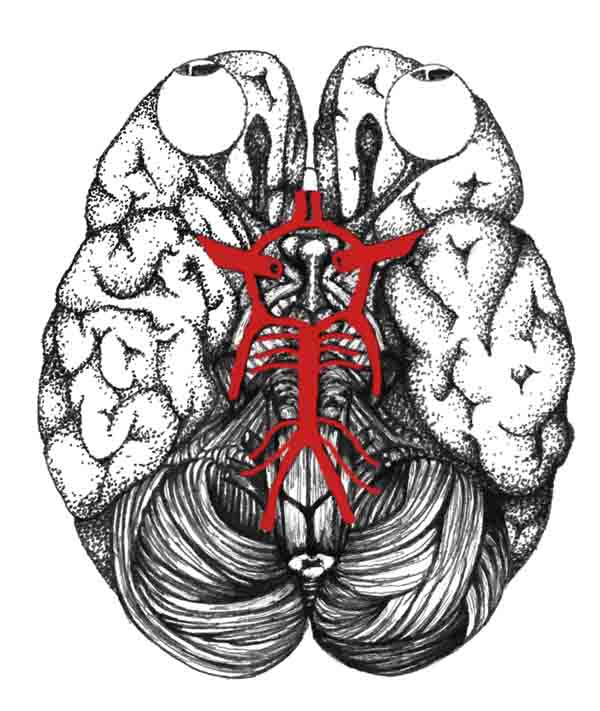Anterior Communicating Artery
The anterior communicating artery (abbreviated ACoA) is a small blood vessel which bridges the two larger anterior cerebral arteries. Together with the posterior cerebral arteries and posterior communicating artery, these arteries form a ring, sometimes called the Circle of Willis, lying at the base of the brain. Normal variations in this layout are so common that only about 50% of the population has a "complete" Circle of Willis. The ACoA gives rise to a number of small branches, called collaterals. The number of collaterals is also variable, and can range from about 5 to 9. These collaterals supply blood to brain areas including the frontal lobes and the basal forebrain.

Anterior Communicating Artery of Aneurysm (ACoA)
The ACoA is one of the most common sites of aneurysm in the brain. About 85% of people who survive ACoA aneurysm recover well enough to return to their normal life; but about 5-15% have long-lasting impairments. These can include memory impairments (such as amnesia), personality changes (such as loss of self-control, unpredictable aggression, or apathy), or a combination of the two.
ACoA symptoms: The precise symptoms depend on which parts of the brain have been damaged by the aneurysm - and since the ACoA branches vary from individual to individual, the impairments do too. It is believed that memory problems occur if the aneurysm damages the basal forebrain, while personality and judgment problems occur if the aneurysm damages the frontal lobes. If both basal forebrain and frontal lobes are damaged, the individual may show a syndrome called confabulation, in which the individual may report detailed memories of events which never occurred (or which occurred at a different time or place).
Further Reading:
Article : "CONFABULATION".
by Catherine E. Myers. Copyright © 2006 Memory Loss and the Brain - Artwork copyright © 2000 Ann L. Myers



